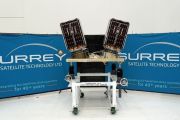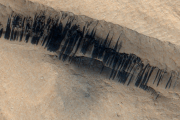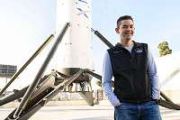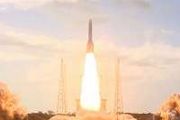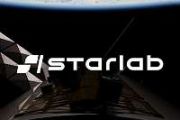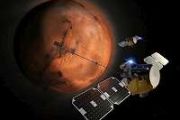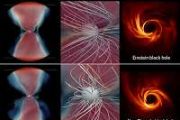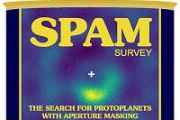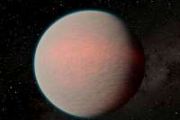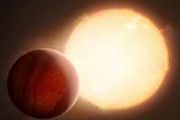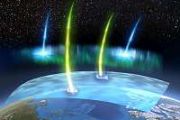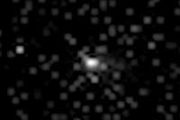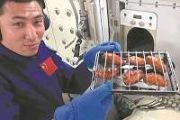
Copernical Team
Final solar eclipse of 2022 happening this morning
 The last solar eclipse of the year was visible across Europe, the Middle East and parts of Asia and Africa on Tuesday.
The partial eclipse is the second of the year and began at about 4:48 a.m. ET with the moon beginning to overlap with the sun. At its peak, about 82%-86% of the sun will be eclipsed. This will happen around 11:10 a.m., though the best spot to observe will be the North P
The last solar eclipse of the year was visible across Europe, the Middle East and parts of Asia and Africa on Tuesday.
The partial eclipse is the second of the year and began at about 4:48 a.m. ET with the moon beginning to overlap with the sun. At its peak, about 82%-86% of the sun will be eclipsed. This will happen around 11:10 a.m., though the best spot to observe will be the North P Gilmour Space partners with Equipmake on advanced motors for rocket program
 Global electrification specialist Equipmake has been selected by Australia's leading space company, Gilmour Space Technologies, to support its commercial space rocket programme with the supply of advanced electric motors and inverters.
Led by former F1 engineer Ian Foley, Equipmake has forged its reputation by developing advanced EV technology for automotive OEMs and specialist supercar ma
Global electrification specialist Equipmake has been selected by Australia's leading space company, Gilmour Space Technologies, to support its commercial space rocket programme with the supply of advanced electric motors and inverters.
Led by former F1 engineer Ian Foley, Equipmake has forged its reputation by developing advanced EV technology for automotive OEMs and specialist supercar ma AFRL upgrades rocket fabrication capabilities
 The Air Force Research Laboratory upgraded its fabrication shop equipment with 20 new state-of-the-art machines for manufacturing rocket components that will enhance capabilities, increase accuracy and save money.
The Rocket Propulsion Division, part of AFRL's Aerospace Systems Directorate, recently modernized its fabrication shop with five new computer numerical control, or CNC, milling m
The Air Force Research Laboratory upgraded its fabrication shop equipment with 20 new state-of-the-art machines for manufacturing rocket components that will enhance capabilities, increase accuracy and save money.
The Rocket Propulsion Division, part of AFRL's Aerospace Systems Directorate, recently modernized its fabrication shop with five new computer numerical control, or CNC, milling m UCF researchers create lunar regolith bricks that could be used to construct Artemis base camp
 As part of NASA's Artemis program to establish a long-term presence on the moon, it aims to build an Artemis base camp that includes a modern lunar cabin, rover and mobile home. This fixed habitat could potentially be constructed with bricks made of lunar regolith and saltwater, thanks to a recent discovery from a team of UCF researchers.
Associate Professor Ranajay Ghosh of UCF's Departme
As part of NASA's Artemis program to establish a long-term presence on the moon, it aims to build an Artemis base camp that includes a modern lunar cabin, rover and mobile home. This fixed habitat could potentially be constructed with bricks made of lunar regolith and saltwater, thanks to a recent discovery from a team of UCF researchers.
Associate Professor Ranajay Ghosh of UCF's Departme Ancient bacteria might lurk beneath Mars' surface
 When Mars' first samples return to Earth, scientists should be on the lookout for ancient sleeping bacteria, a new study has found.
In a first-of-its-kind study, a research team, including Northwestern University's Brian Hoffman and Ajay Sharma, found that ancient bacteria could survive close to the surface on Mars much longer than previously assumed. And - when the bacteria are buried and
When Mars' first samples return to Earth, scientists should be on the lookout for ancient sleeping bacteria, a new study has found.
In a first-of-its-kind study, a research team, including Northwestern University's Brian Hoffman and Ajay Sharma, found that ancient bacteria could survive close to the surface on Mars much longer than previously assumed. And - when the bacteria are buried and Considerations for microbial survivability of ionizing radiation on Mars for sample returns
 As the goals of Mars exploration expand to include sample return, it becomes important to protect Earth from potential extraterrestrial sources of contamination. Likewise, it is important to avoid mistaking Earth life for indigenous life brought back from Mars.
In a new study, scientists examine the effects of desiccation and freezing on microbial ionizing radiation survivability on Mars.
As the goals of Mars exploration expand to include sample return, it becomes important to protect Earth from potential extraterrestrial sources of contamination. Likewise, it is important to avoid mistaking Earth life for indigenous life brought back from Mars.
In a new study, scientists examine the effects of desiccation and freezing on microbial ionizing radiation survivability on Mars. Proba-2 sees two partial eclipses
 Video:
00:00:23
Video:
00:00:23
ESA’s Proba-2 captured two partial solar eclipses on 25 October 2022.
A solar eclipse is caused by the movement of the Moon around Earth. Despite their much different sizes, due to their separation, the Moon appears to be about the same size as the significantly larger Sun in the sky. Occasionally, the Moon passes in front of the Sun, blocking its light, so that part of the Earth’s surface is in the Moon’s shadow. The line-up is not always perfect, and so not every eclipse is a total solar eclipse.
On 25 October only part of the Sun’s light was
Craters and cracks on Mars

This complex region of craters and fractures in the Terra Sirenum region highlights the varied history of Mars. The image was taken by ESA’s Mars Express on 5 April 2022.
ESA plans for low-orbiting navigation satellites

Satellite navigation is headed closer to users. ESA’s Navigation Directorate is planning an in-orbit demonstration with new navigation satellites that will orbit just a few hundred kilometres up in space, supplementing Europe’s 23 222-km-distant Galileo satellites. Operating added-value signals, these novel so-called ‘LEO-PNT’ satellites will investigate a new multi-layer satnav system-of-systems approach to deliver seamless Positioning, Navigation and Timing services that are much more accurate, robust and available everywhere.
Webb explores a pair of merging galaxies
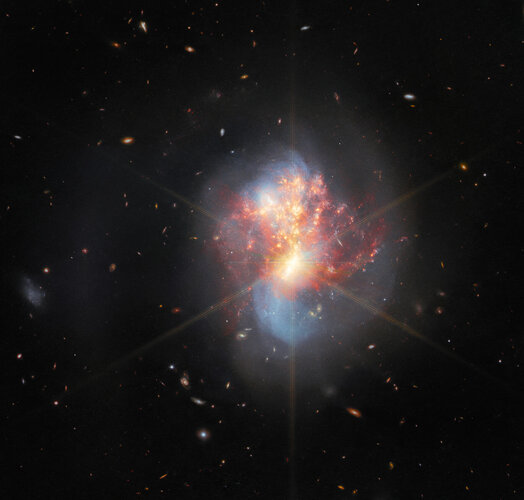 Image:
Webb explores a pair of merging galaxies
Image:
Webb explores a pair of merging galaxies 







